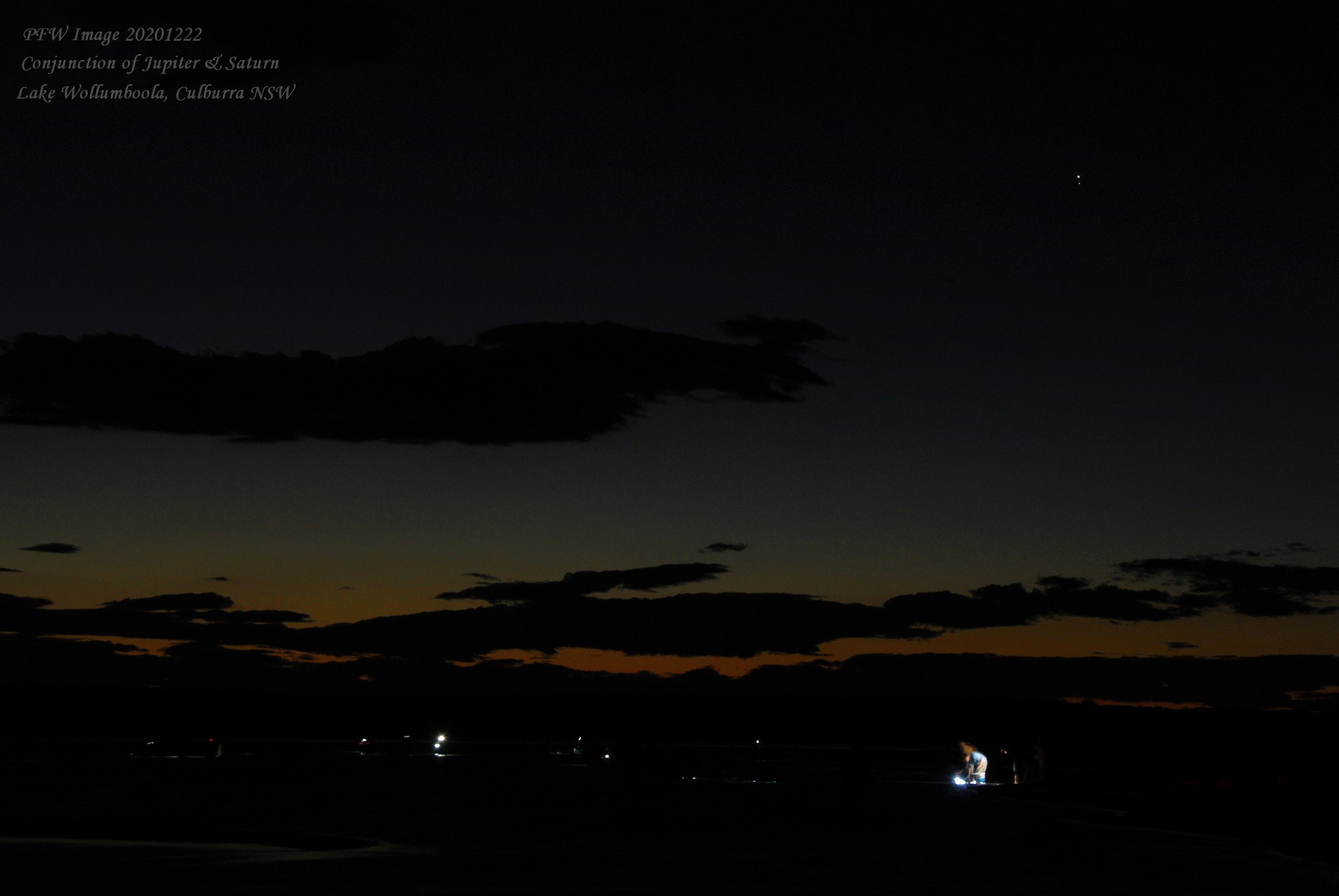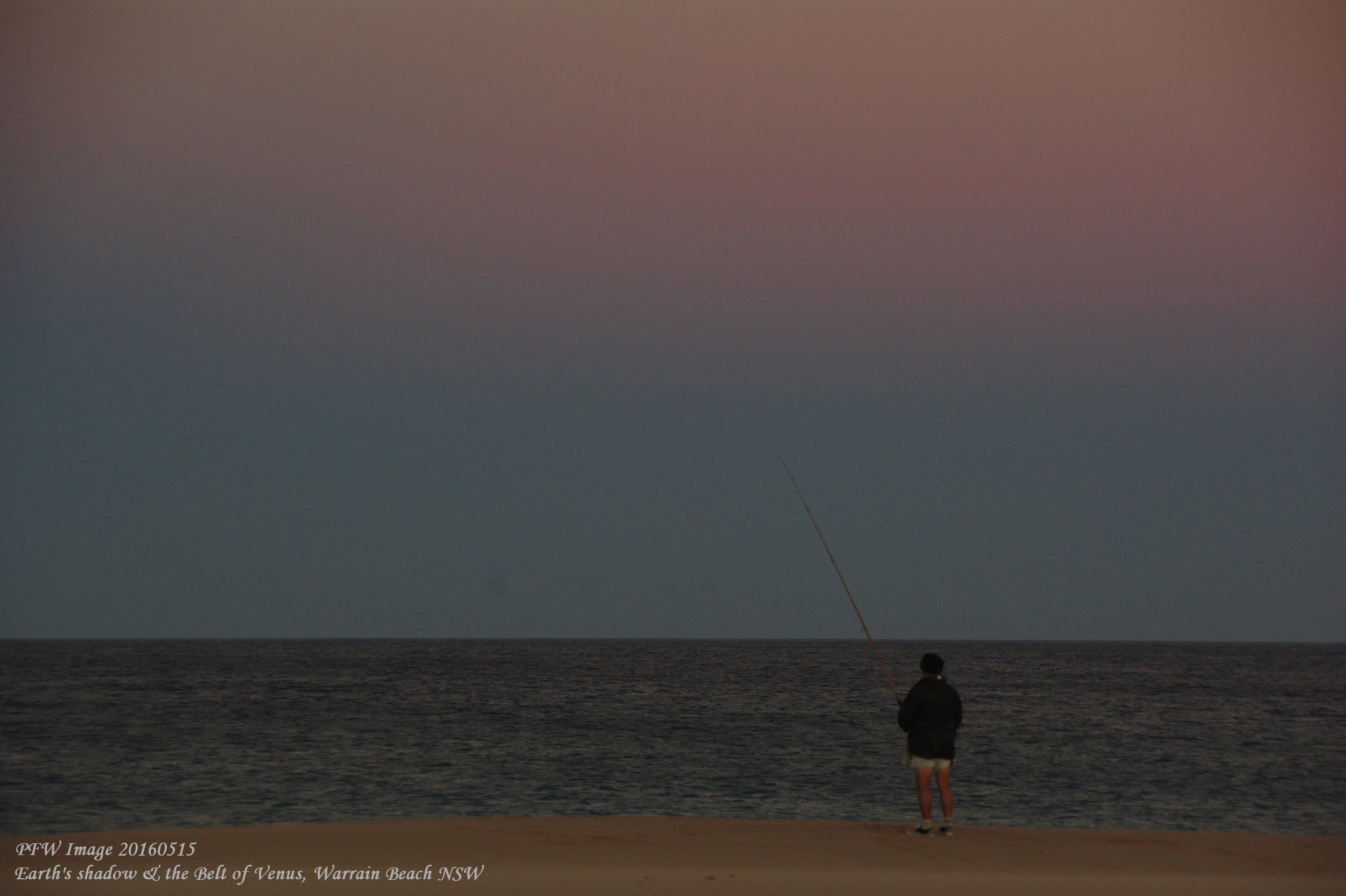Reflections on Planetary Conjunctions and Shadows
The Great Conjunction of the planets Jupiter and Saturn that occurred on December 21, 2020 has now passed and seemingly already forgotten by most as our often fast-paced daily lives move forward. Unfortunately, for many of us living along the east coast of Australia cloud prevented us from viewing these two gas giants at their closest separation.
Numerous images have been circulated on social media showing the two planets within the same telescopic field of view, Jupiter with its clearly flattened disc and the four bright Galilean Satellites (its 4 largest moons) and Saturn with its beautiful ring system. Spectacular indeed as seen through a telescope but that is not the general public got to see. Also, while it was certainly nice to have seen Jupiter and Saturn at their closest on that day, those who followed their movement in the evening sky over several weeks had the chance to watch real but gradual movement in what often seems to be a never changing night sky.
Apart from the day to day motion of the moon, it is generally only when two or more bright objects come close together that the dynamic nature of the night sky is easily seen. Conjunctions of the moon and planets with each other and with bright stars are in fact relatively common but few of these events make the mainstream media. But that is another story for some later time.
Shown here in Figures 1 & 2 are two separate images of the Great Conjunction taken about 2 weeks apart to show the movement of Jupiter and Saturn. Figure 1 was taken from southern Sydney while Figure 2 shows them over that waters of Lake Wollumboola near the coastal town of Culburra, south of Sydney, New South Wales. The Figure 2 image shows Jupiter and Saturn on 22 December, the day after closest separation, and shows the view similar to that seen with the unaided eye as the sky began to darken with the onset of twilight.
It is a simple short time exposure where the camera with shutter cable release is mounted on a fixed tripod and therefore unguided.


With this setup and a standard lens, a typical exposure of several seconds will produce minimal trailing due to the earth’s rotation and bright objects such as the planets are readily recorded. Include the fading light and colours of twilight with a foreground feature such as a lake, a tree or building and the resulting image can be quite pleasing (but always aim to do better next time!). Images such as this can be taken by anyone who has a camera capable of taking time exposures (a Bulb setting), plus a tripod to steady the camera and a cable release to overcome any camera shake when releasing the shutter.
Manual focus option is also an advantage and the tripod need not be extended fully if there is a stiff breeze, as was the case at Lake Wollumboola.
The onset of twilight also offers an opportunity to see two other interesting phenomenon in the sky, both easy to see with the unaided eye yet so often overlooked by many.
As most were facing west towards where the sun had just dipped below the horizon and awaiting the planets to appear as the sky darkened, there was another sky show happening behind them along the eastern horizon. Those who simply turned around to face east in the direction opposite where the sun had just set would have seen the shadow of our home planet Earth projected into the depths of space.
The Earth’s shadow is best seen during the early stages of twilight, rising above the horizon just after the sun has set and the sky begins to darken. It appears as a dark band, most often with a slightly mauve or pinkish tint, to the east but extending only for several degrees above the horizon and then quickly disappearing as twilight progresses towards darkness.

Figure 3 shows the dark band of the Earth’s shadow skirting the eastern horizon during twilight over Warrain Beach (taken during an earlier visit) where the sands separate the briny Tasman Sea from the fresh water of Lake Wollumboola. Perhaps the fisherman here is contemplating the shadow while patiently waiting to land the big one.
Above the darkness of the shadow is another pinkish band of colour in the sky, also clearly evident to the unaided eye and as seen in Figure 3. This atmospheric phenomenon is known as the Belt of Venus and is where that brilliant planet is first seen close to the horizon as it towards, or emerges from, conjunction with the sun. The colour here is often subtle yet quite distinct once seen.
Both the Earth’s shadow and the Belt of Venus are better seen when the air is clear of suspended fine particles that will scatter the light and “wash out” the sky. A horizon that is largely unobscured by tall trees and buildings will also make the task a little easier and remember both can be seen in either the morning or evening sky opposite where the sun will rise or set, in the east shortly after the sun has set and to the west before sunrise.
On reflection, I am sure that fisherman was looking out in wonder across the sea and vastness of the sky, simply enjoying the feeling of his spirits being lifted by the beauty of nature, even if the big one did get away.
Posted with STEMGeeks
The Bethelehem Star occurs next in 60 years time and then only in another 460 years, if we take present orbits as pertaining then, which is unlikely.
Electric Universe Theory EUT, holds that the Sun and planets are driven by a great Filament greater than all the local stars.
This Electromagnetic current will reverse polarity. It seems it does so every 500 years or so. Then we have a stronger Sun, next time it will be Green.
Hello,
Certainly an interesting take on the blog. I'm glad it got you thinking.
Thanks for stopping by!
I also didn't get to see the conjunction because of cloud cover. The last clear evening that we had here was about a week before the conjunction. I took a couple of pictures then that are not too bad, considering my inexpensive camera. It's winter here where I live, and it's almost always cloudy here in the winter.
Hello,
It's always the way, isn't it Amber? Astronomers - Breaking droughts since the dawn of time!
You should share a few of your early pics here on the blog anyway. It's always interesting to see different perspectives.
Congratulations @pfwaus! You have completed the following achievement on the Hive blockchain and have been rewarded with new badge(s) :
You can view your badges on your board and compare yourself to others in the Ranking
If you no longer want to receive notifications, reply to this comment with the word
STOPThanks guys.
You're welcome @pfwaus
Support us back and vote for our witness.
You will get one more badge and bigger upvotes from us when we notify you.